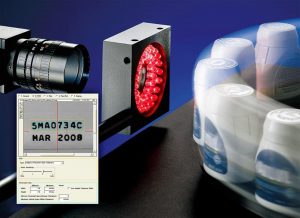New age vision tools for quality control
 The new generation of modern consumer protection laws are becoming more comprehensive and all inclusive. As a result, the manufacturing industry is shifting safety and quality control focus from reactive damage control measures to proactive quality control implementations. It is widely recognized that most of these quality related issues arise due to faulty product or packaging, contamination or incorrect labelling.
The new generation of modern consumer protection laws are becoming more comprehensive and all inclusive. As a result, the manufacturing industry is shifting safety and quality control focus from reactive damage control measures to proactive quality control implementations. It is widely recognized that most of these quality related issues arise due to faulty product or packaging, contamination or incorrect labelling.
We can all recall the many instances when companies have had to recall entire stock of food, medicine or electronic goods because they were unable to trace the cause and extent of fault for contamination. This not only causes unnecessary wastage but also deals a blow to the company reputation and consumer trust in the product, not to mention the losses to the consumer themselves.
Vision inspection systems offer new age quality control checks that not only help to quickly identify and trace the faulty products or processes but also help to prevent such failures before they happen. When talking about such vision inspection systems the two major points of importance are speed and accuracy. While speed is important for ensuring delivery timelines, accuracy is equally essential in identifying faults on the assembly line itself which will go a long way in preventing troublesome recalls and investigations later on. Modern vision inspection systems aim to provide quality inspection matching or even exceeding the capabilities of human vision.
Vision inspection systems are equipped with one or more high definition cameras along with additional capabilities. These systems are a combination of various technologies and can be customized as per the requirements of particular industries. They can be used in assembly lines to verify products and packaging, measure and sort different parts of products based on size, shape or other factors, verify the accuracy of positioning and alignment of the parts. They can read 1D and 2D barcodes and utilize optical character recognition (OCR) for track and trace along with much more. Specialized software created for use in these systems can help to identify faulty or inefficient products and processes at an early stage. Thus, these systems find applications in industries such as food and beverage, pharmaceuticals, electronics, consumer goods, robotics and many other manufacturing and service industries.
The most important benefits of vision control systems is to provide quality control and traceability to industries so that faulty products can be minimized and easily identified early one. These systems provide peace of mind to the company, while protecting the consumers from the adverse effects of using or consuming unsafe products. Learn more.
